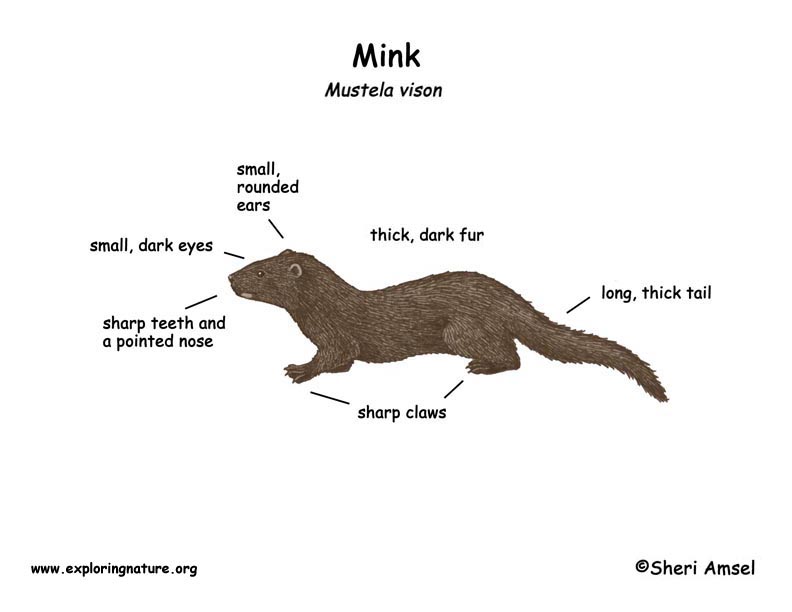

Mink are found throughout the United States and Canada.
They live in forests that border streams, lakes and ponds with brushy, rocky shores.
Their long, thin body and pointy face, is typical of the weasel family. They have a soft, dark coat with white on the throat and chest. They can be as long as 2 feet, but up to half of that can just be tail. Females are smaller than the males.
They are nocturnal, but are often active at dawn and dusk. They can swim and climb trees, and dig burrows at the edge of the water. They live alone, but may have many mates.
They feed on small mammals, birds, frogs, and crayfish.
Predators are otter and man.
Females are pregnant for 40-75 days (gestation), having up to 8 young in April or May.
They live up to 10 years in the wild. They are listed as Lower Risk - least concern.
Kingdom: Animalia
Phylum: Chordata
Subphylum: Vertebrata
Class: Mammalia
Order: Carnivora
Suborder: Caniformia
Family: Mustelidae
Subfamily: Mustelinae
Genus: Neovison
Species: Neovison vison
When you research information you must cite the reference. Citing for websites is different from citing from books, magazines and periodicals. The style of citing shown here is from the MLA Style Citations (Modern Language Association).
When citing a WEBSITE the general format is as follows.
Author Last Name, First Name(s). "Title: Subtitle of Part of Web Page, if appropriate." Title: Subtitle: Section of Page if appropriate. Sponsoring/Publishing Agency, If Given. Additional significant descriptive information. Date of Electronic Publication or other Date, such as Last Updated. Day Month Year of access < URL >.
Amsel, Sheri. "Mink" Exploring Nature Educational Resource ©2005-2024. March 25, 2024
< http://www.exploringnature.org/db/view/347 >

